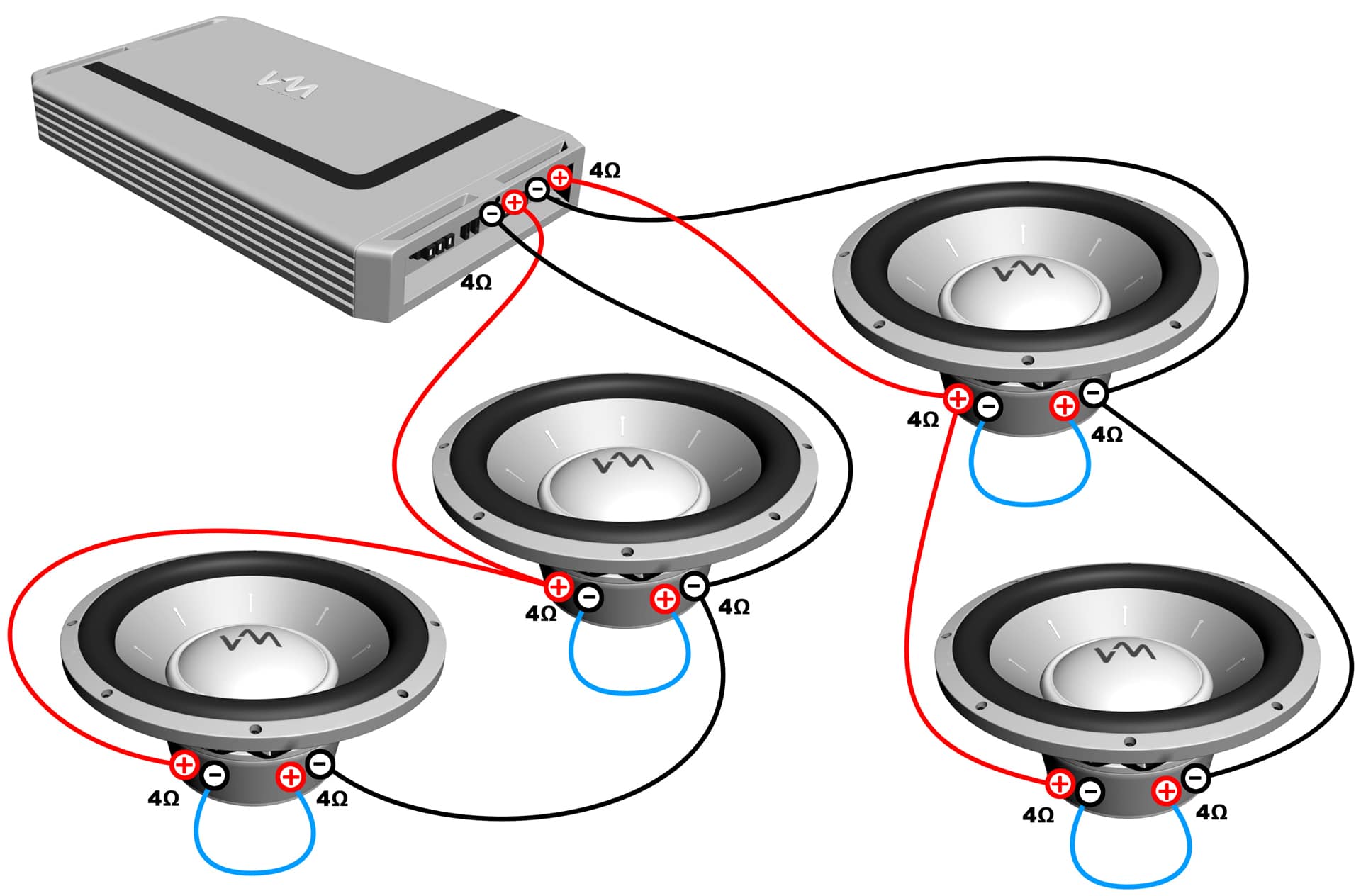Dual Subwoofer Setup Amplified Debate

So, you've caught the bass bug. One subwoofer just isn't cutting it anymore, and you're eyeing a second sub for that truly immersive, low-end rumble. But now you're facing a dilemma: a single amp or a two-channel amplifier? Do you really need a 2-channel amp for 2 subs? Let's dive into the vibrating world of subwoofer amplification and find out.
The pursuit of powerful bass is a noble quest, a journey that often leads to the consideration of multiple subwoofers. While a single, powerful subwoofer can certainly deliver a satisfying thump, two subwoofers can provide a more even bass response throughout your listening space, minimizing those pesky nulls and peaks that can leave some areas booming while others are left wanting. But with the addition of a second sub comes the question of amplification: can your existing amplifier handle the load, or is a separate, dedicated amplifier—perhaps even a 2-channel model—necessary?
The need for a two-channel amplifier largely depends on the capabilities of your existing equipment and the specific subwoofers you're using. Some AV receivers have dedicated outputs for multiple subwoofers, allowing you to connect two subs to a single amplifier. However, these outputs often share the same amplification channel, essentially splitting the power between the two subwoofers. This can be perfectly adequate for many setups, especially if your subwoofers are relatively efficient and your listening room isn't enormous.
However, if you're aiming for truly earth-shaking bass or have particularly power-hungry subwoofers, a dedicated amplifier, especially a two-channel model, can offer distinct advantages. A two-channel amp allows you to independently control the power delivered to each subwoofer, enabling finer tuning and optimization for your specific room acoustics. This can be especially beneficial in rooms with irregular shapes or challenging layouts, where achieving even bass distribution can be tricky.
Now, let's explore the different amplification options for powering dual subwoofers. You could use a single mono amplifier with speaker-level inputs connected to both subwoofers, effectively bridging the two subs. However, this can lead to impedance issues and may not provide optimal performance. Using a two-channel amp allows you to connect each subwoofer to its own dedicated channel, providing more control and potentially cleaner, more powerful bass.
One benefit of using a 2-channel amp is individual subwoofer control. This allows you to adjust the volume and other settings for each sub independently, leading to better integration within the room's acoustics.
Another advantage is optimized power distribution. Each subwoofer gets its own dedicated power source, maximizing performance, particularly with power-hungry subwoofers.
Finally, a 2-channel amp offers increased flexibility for future upgrades. If you decide to add more subwoofers later, a 2-channel amp can be more readily adapted to the new configuration.
Here's a simplified action plan: 1. Assess your current setup. 2. Determine your subwoofer's power requirements. 3. Choose the right amplifier. 4. Properly connect and calibrate your system.
Advantages and Disadvantages of Using a 2-Channel Amp for 2 Subs
| Advantages | Disadvantages |
|---|---|
| Independent Subwoofer Control | Increased Cost |
| Optimized Power Distribution | Added Complexity |
| Flexibility for Future Upgrades | Potential Overkill for Smaller Systems |
Best Practices: 1. Match amplifier power to subwoofer requirements. 2. Use high-quality cables. 3. Calibrate your system using a sound level meter or room correction software. 4. Experiment with subwoofer placement. 5. Consider acoustic treatment for your room.
FAQs: 1. Can I connect two subwoofers to a single amp? (Often, yes). 2. What are the benefits of using a 2-channel amp? (Independent control, optimized power). 3. Is a 2-channel amp always necessary? (No, depends on the setup). 4. How do I connect two subwoofers to a 2-channel amp? (One sub per channel). 5. What gauge wire should I use? (Depends on the length and power requirements). 6. How do I calibrate two subwoofers? (Using a sound level meter or room correction software). 7. Can I use different subwoofers with a 2-channel amp? (Yes). 8. What are the common issues with dual subwoofer setups? (Phase cancellation, uneven bass response).
Tips and tricks: Experiment with subwoofer placement to find the optimal location for even bass response. Use acoustic treatment to minimize room modes and improve overall sound quality. Invest in a good quality sound level meter for accurate calibration.
In conclusion, determining whether a 2-channel amplifier is necessary for your dual subwoofer setup depends on various factors. While a single amplifier can often suffice, particularly with less demanding subwoofers and smaller rooms, a dedicated 2-channel amp provides greater control, optimized power delivery, and enhanced flexibility for future expansion. By carefully considering your specific needs, room acoustics, and budget, you can craft a subwoofer setup that delivers truly thunderous, well-integrated bass, transforming your listening experience from merely audible to truly visceral. Take the time to research, experiment, and fine-tune your system, and you'll be rewarded with the deep, satisfying rumble you've been craving. Don't settle for mediocre bass - embrace the power of dual subwoofers and unlock the full potential of your audio system.
One piece time skip which episode marks the transformation
Understanding the childfree life a growing choice
Optimal car voltage while running












